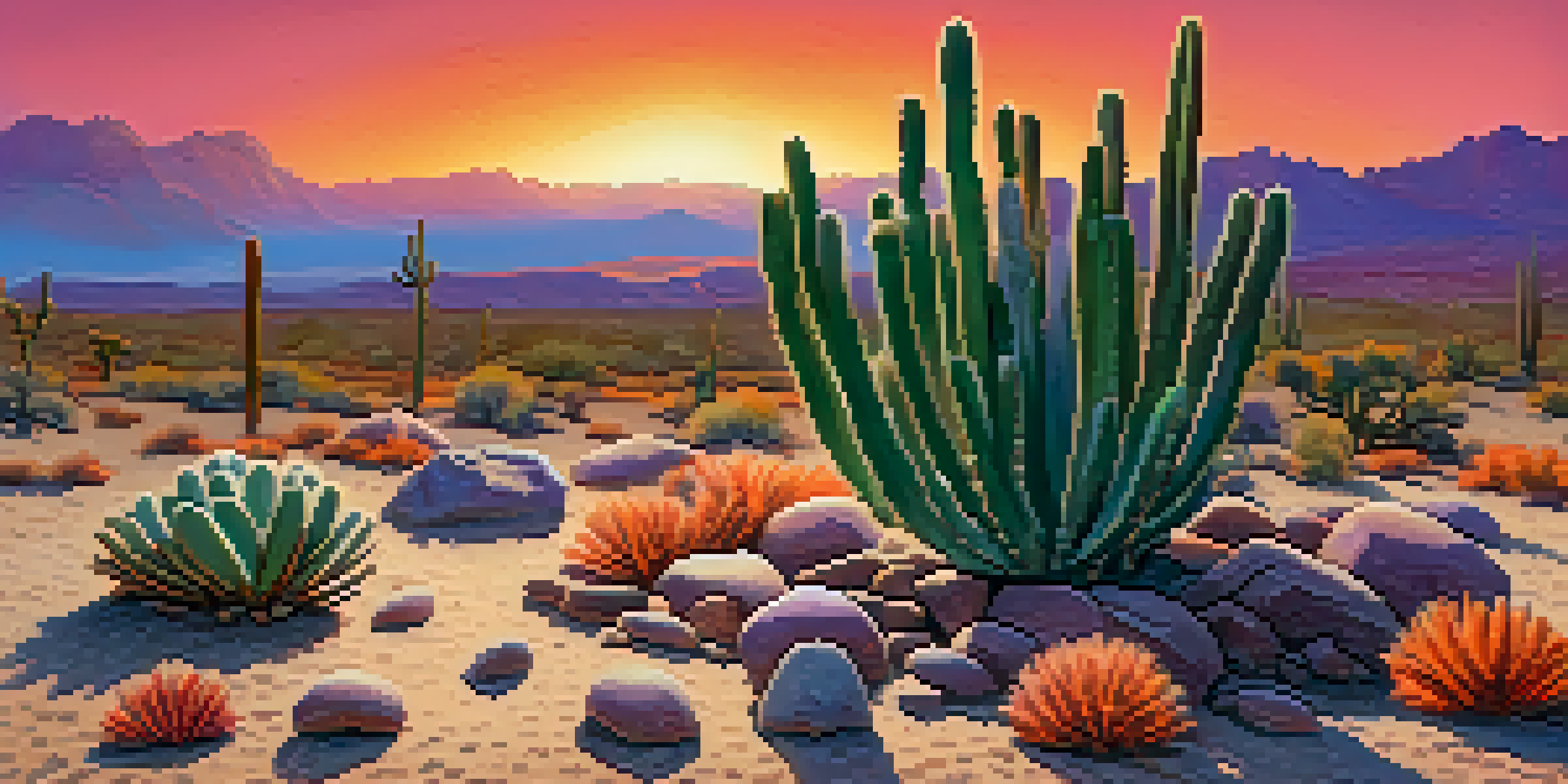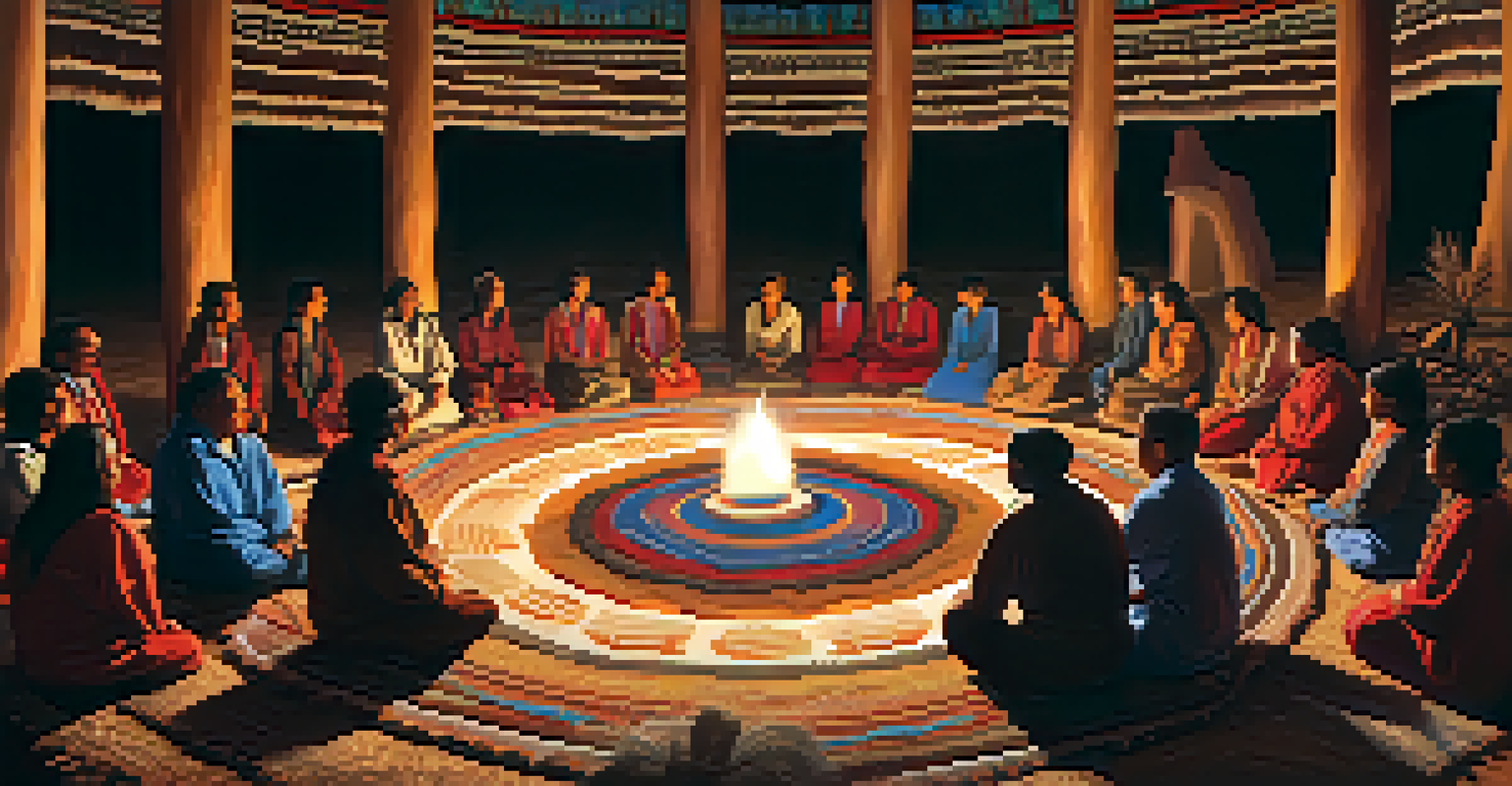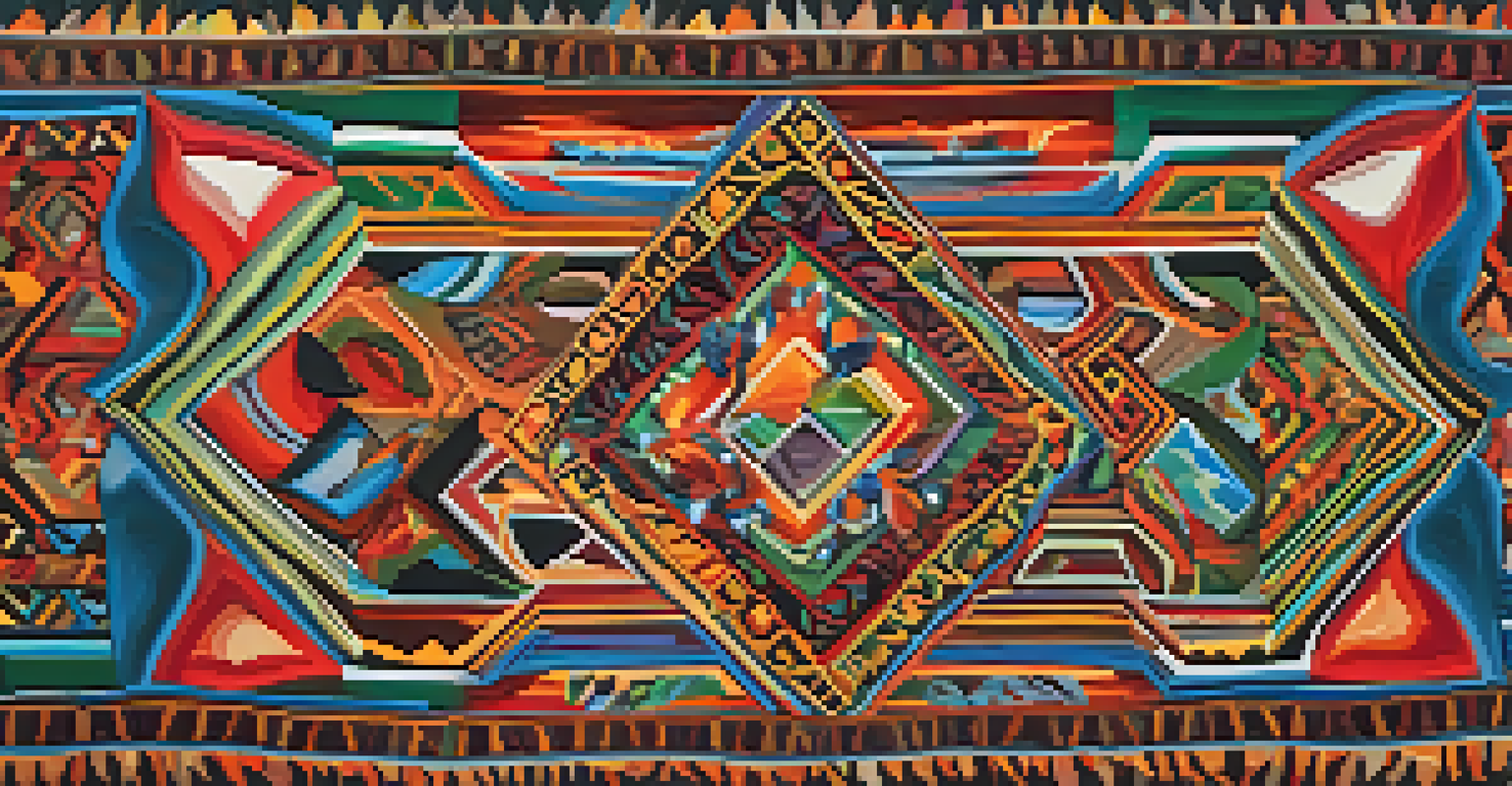Cultural Symbolism of Peyote in Indigenous Art and Rituals

Understanding Peyote: A Brief Overview
Peyote is a small, spineless cactus that has been revered by Indigenous cultures for centuries. It's primarily found in the southwestern United States and Mexico, where it has been used in spiritual practices for its psychoactive properties. Traditionally, the cactus is consumed during rituals to facilitate visions and connect with the spiritual world. This sacred use makes peyote much more than just a plant; it's a vital part of cultural identity and heritage.
The use of peyote is a profound spiritual practice that underscores the interconnectedness of all life.
The cactus contains mescaline, a psychoactive compound that induces altered states of consciousness, allowing users to experience profound insights. For many Indigenous peoples, these experiences are considered a means of healing and personal growth. This connection to the plant reflects a deep respect for nature and its offerings, emphasizing the relationship between the land and the people who inhabit it.
In the context of Indigenous art, peyote's significance can be seen in various forms, from traditional clothing to intricate beadwork. These artistic expressions often symbolize the spiritual journeys undertaken during peyote ceremonies, serving as a visual narrative of the experiences and teachings gained through these rituals.
Peyote in Rituals: Spiritual Significance
Rituals involving peyote are sacred events that carry immense spiritual weight in Indigenous communities. These ceremonies often involve chanting, drumming, and communal sharing, creating a space for healing and reflection. Participants typically gather in a ceremonial lodge, where the atmosphere is charged with intentional energy and purpose, facilitating a deeper connection to the spiritual realm.

The peyote ceremony is not just an individual experience; it fosters a sense of community and belonging. Elders often play a central role, guiding participants through the ritual and imparting wisdom. This mentorship is essential, as it grounds the experience in tradition and ensures the teachings of past generations are passed down to the younger members of the community.
Peyote's Spiritual and Healing Role
Peyote is used in Indigenous rituals for healing and spiritual growth, fostering deep connections to the community and the natural world.
Through these rituals, peyote serves as a bridge between the physical and spiritual worlds, allowing participants to explore their inner selves and seek guidance. This transformative process reinforces the importance of spirituality in daily life and highlights how cultural practices can enhance personal and communal well-being.
Artistic Expressions of Peyote Symbolism
Indigenous art offers a vivid canvas for expressing the symbolism of peyote. Artists often incorporate the cactus into their work to convey themes of spirituality, transformation, and connection to nature. These artistic representations can take many forms, including paintings, sculptures, and textiles, each telling a unique story about the artist's relationship with peyote and its significance.
Cultural appreciation involves engaging with Indigenous practices in a way that respects their origins and significance.
For instance, in many artworks, peyote is depicted alongside animals, natural elements, or human figures, symbolizing the interconnectedness of all living beings. This portrayal reflects the belief that every aspect of life is intertwined, a theme that resonates deeply within Indigenous philosophies. By using peyote imagery, artists not only celebrate their cultural heritage but also educate others about these profound connections.
Moreover, the vibrant colors and intricate designs found in Indigenous art inspired by peyote serve to evoke emotions and provoke thought. This artistic dialogue invites viewers to engage with the deeper meanings behind the visuals, fostering a greater appreciation for the cultural significance of peyote and its role in Indigenous spirituality.
The Role of Peyote in Healing Practices
Healing is a core aspect of peyote's use within Indigenous cultures, with many believing that it can cure both physical and spiritual ailments. During ceremonies, the psychoactive properties of peyote are thought to facilitate deep introspection, allowing individuals to confront personal traumas and emotional struggles. This process is often guided by healers who assist participants in navigating their experiences.
The healing power of peyote is not limited to the individual; it can benefit the entire community. By addressing collective issues, such as grief or social strife, peyote ceremonies create a space for communal healing. This shared experience reinforces social bonds and fosters resilience, underscoring the interconnectedness of community wellness and individual health.
Cultural Appropriation vs. Appreciation
The interest in peyote by non-Indigenous individuals raises important discussions about respecting its sacred significance versus exploiting its cultural meaning.
Furthermore, the holistic approach to healing in these rituals emphasizes the balance between mind, body, and spirit. It's a reminder that wellness is multifaceted, and engaging with peyote within a traditional framework can provide profound insights into one's life and relationships.
Cultural Appropriation vs. Appreciation
The growing interest in peyote among non-Indigenous individuals has sparked discussions around cultural appropriation versus cultural appreciation. While some seek to understand and honor the plant's significance, others may exploit its use without recognizing its sacredness. This distinction is crucial, as peyote is not merely a plant but a symbol of cultural identity for many Indigenous peoples.
Cultural appropriation can lead to the commodification of Indigenous practices, stripping away their spiritual and cultural context. This can be harmful, as it undermines the profound teachings and traditions that have been developed over generations. Recognizing and respecting the origins of peyote use is essential for fostering genuine understanding and preventing exploitation.
On the other hand, cultural appreciation involves a respectful engagement with Indigenous practices, often through education and collaboration. By learning from Indigenous peoples and supporting their rights, non-Indigenous individuals can partake in a more meaningful relationship with peyote, one that honors its rich cultural heritage and promotes mutual respect.
Modern Challenges Facing Peyote Use
Despite its cultural significance, peyote faces several modern challenges that threaten its availability and traditional use. Overharvesting and habitat loss due to climate change and urban development are major concerns. As demand for peyote increases, particularly in non-Indigenous circles, the pressure on natural populations intensifies, raising questions about sustainability and conservation.
Additionally, legal restrictions surrounding peyote use can complicate its traditional practices. In some areas, laws may hinder Indigenous peoples from engaging in rituals that have been performed for centuries. This legal landscape creates a tension between cultural rights and governmental regulations, prompting ongoing advocacy for the protection of Indigenous practices.
Modern Challenges to Peyote's Use
Peyote faces threats from overharvesting and legal restrictions, prompting Indigenous communities to advocate for its conservation and cultural rights.
Indigenous communities are actively working to address these challenges, emphasizing the importance of conservation efforts and legal recognition of their rights to practice peyote ceremonies. By raising awareness about these issues, they aim to ensure that peyote can continue to play a vital role in their cultural and spiritual lives.
Peyote: A Living Cultural Legacy
Peyote embodies a living cultural legacy that continues to evolve while remaining rooted in tradition. Its use in art and rituals reflects a deep understanding of the spiritual and natural world, showcasing the resilience of Indigenous cultures. As these communities navigate contemporary challenges, their commitment to preserving the significance of peyote remains unwavering.
This legacy is not just confined to the past; it informs the present and shapes the future. Younger generations are increasingly recognizing the importance of their cultural heritage and are actively engaging in rituals and artistic expressions related to peyote. This revitalization is crucial for sustaining traditional practices and ensuring the continued relevance of peyote in modern Indigenous life.

Ultimately, peyote serves as a powerful reminder of the interconnectedness of all life and the importance of respecting and honoring cultural traditions. Through art, rituals, and community, the symbolism of peyote endures, inviting us all to reflect on our relationship with nature and spirituality.